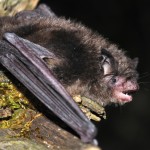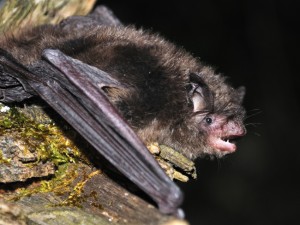A Welcome Mat for Bats
Enhancing Bat Roosting Habitat in NJ’s Forests
Posted by MacKenzie Hall, Private Lands Biologist
Kyle Whittle, a Boy Scout from West Milford, will earn his Eagle rank soon for a project that adds summer roosting habitat for forest bats. Dwindling habitat is a threat to NJ bats – even those that aren’t affected by White-nose Syndrome – and most of our 9 species need dead/dying trees with flaking bark to roost and raise their young. Artificial roosts can also be successful and long-lasting. Kyle chose to put his Eagle-eye on bats after hearing about our Indiana Bat Forestry Project through a family friend with several wooded acres to offer.
Last week I worked with Kyle and a group of his friends to mount bat roosts at the West Milford property, which sits on the edge of the Bearfort Mountains. We hiked up a steep hill of rhododendrons and hemlocks to the deeper part of the forest…a really enjoyable walk without the ladders, hammers, bundles of cedar shakes, asphalt paper, screw guns, and 15-lb bat houses!
The afternoon made good use of the teenagers’ energy, carpentry skills, and tree-climbing impulses. They put up four traditional bat houses, built earlier by Kyle, and a few tree “wraps” meant to resemble the loose bark of dead trees. We chose trees that get a lot of sun during the day; the owners will also do some girdling to open the canopy and create natural roosts.
Bats are starting to show up in their summer grounds again. Thanks, Kyle & crew, for rolling out the welcome mat!


